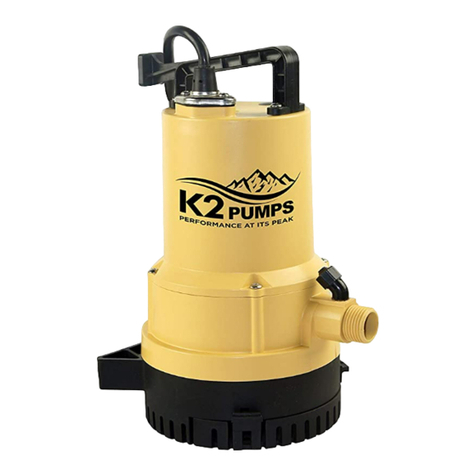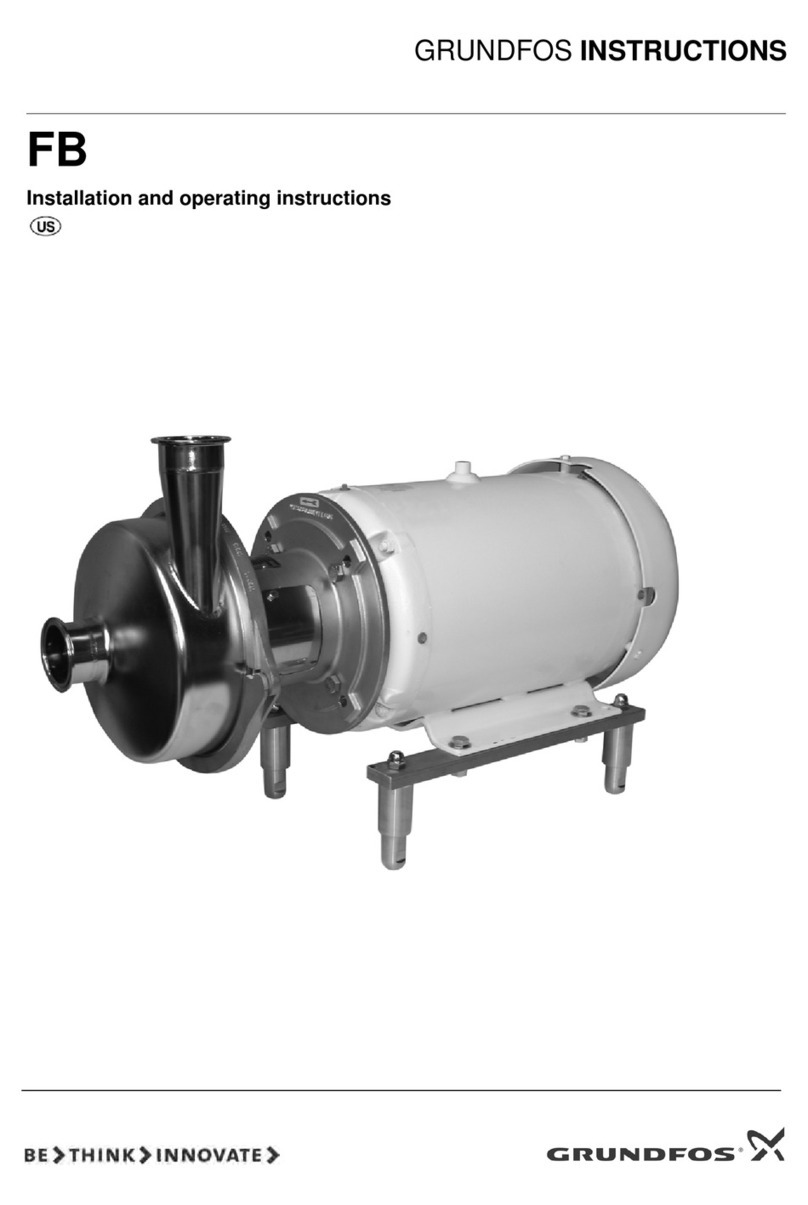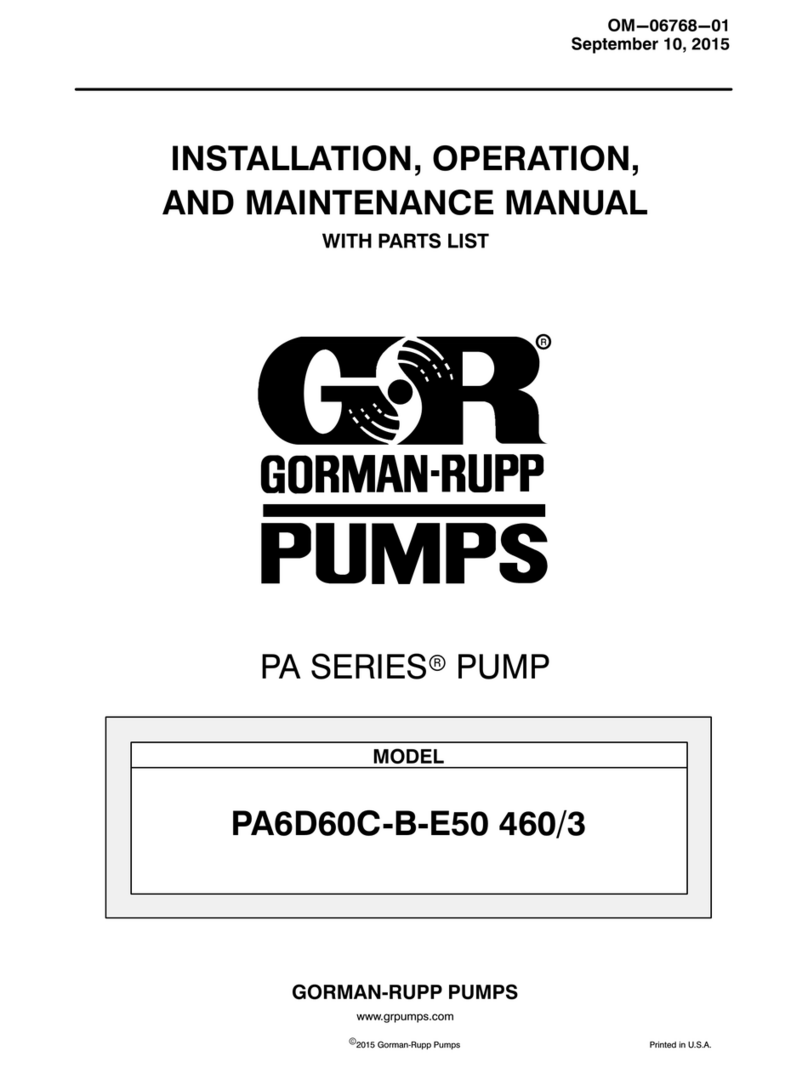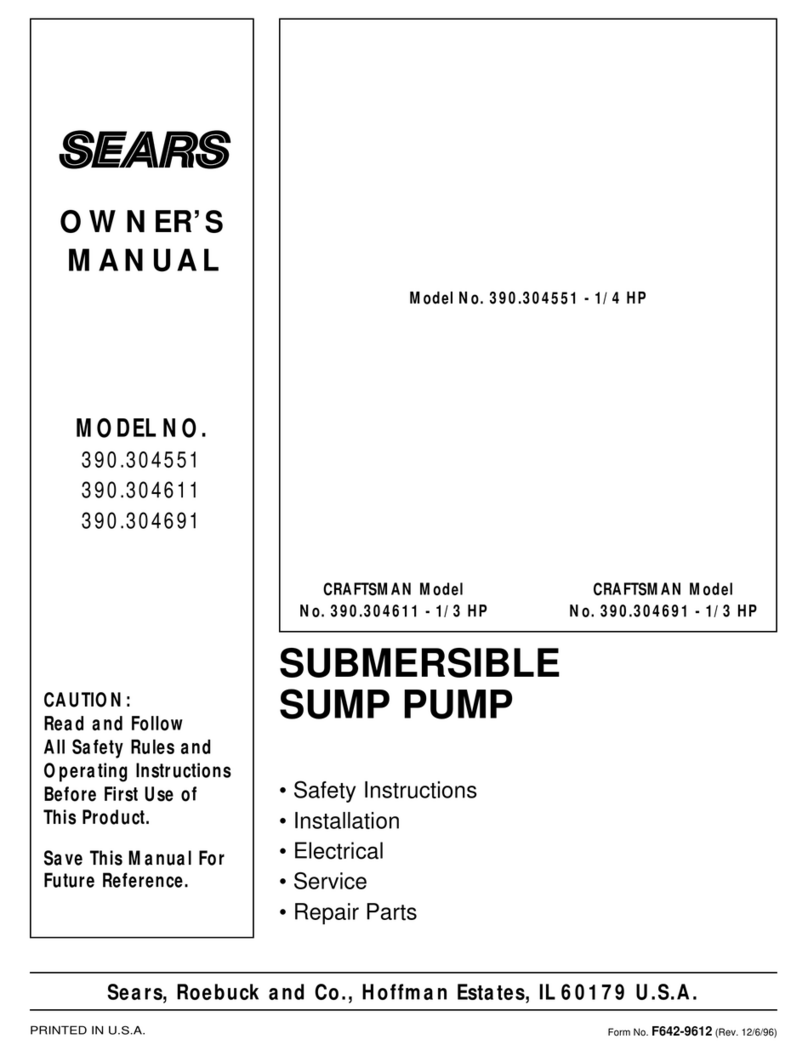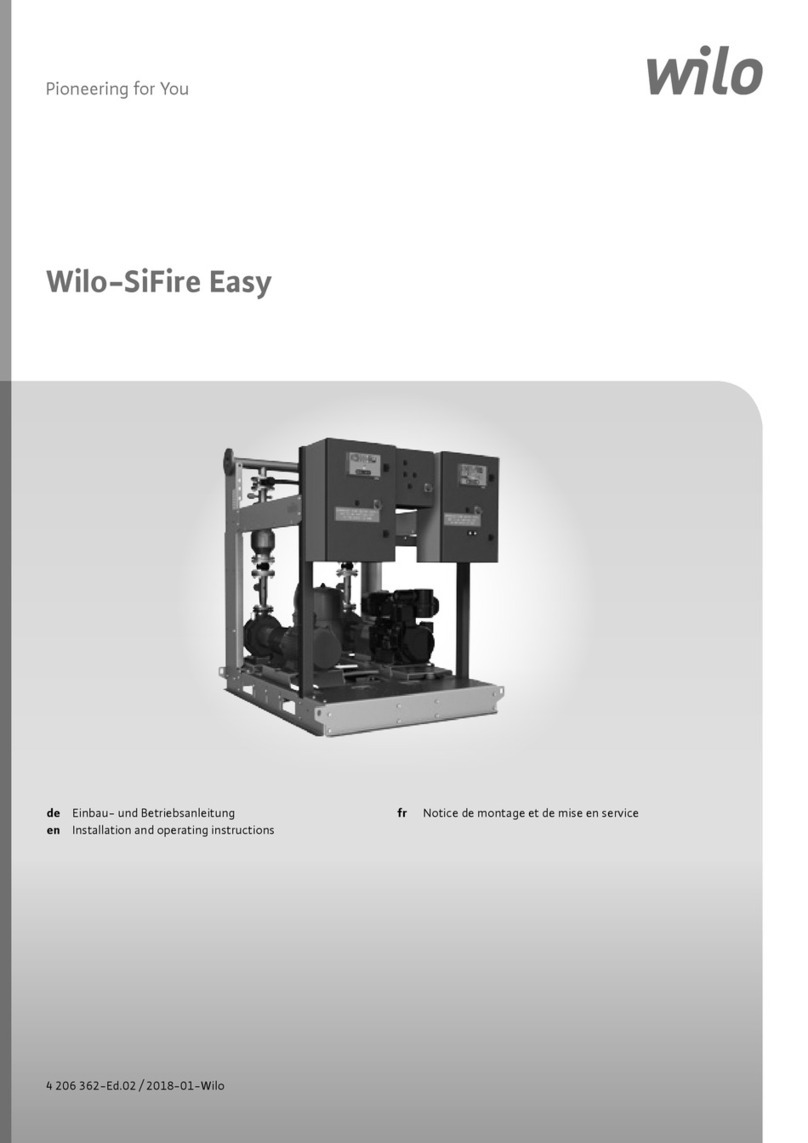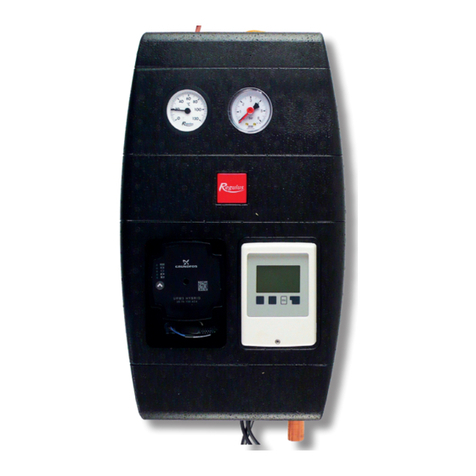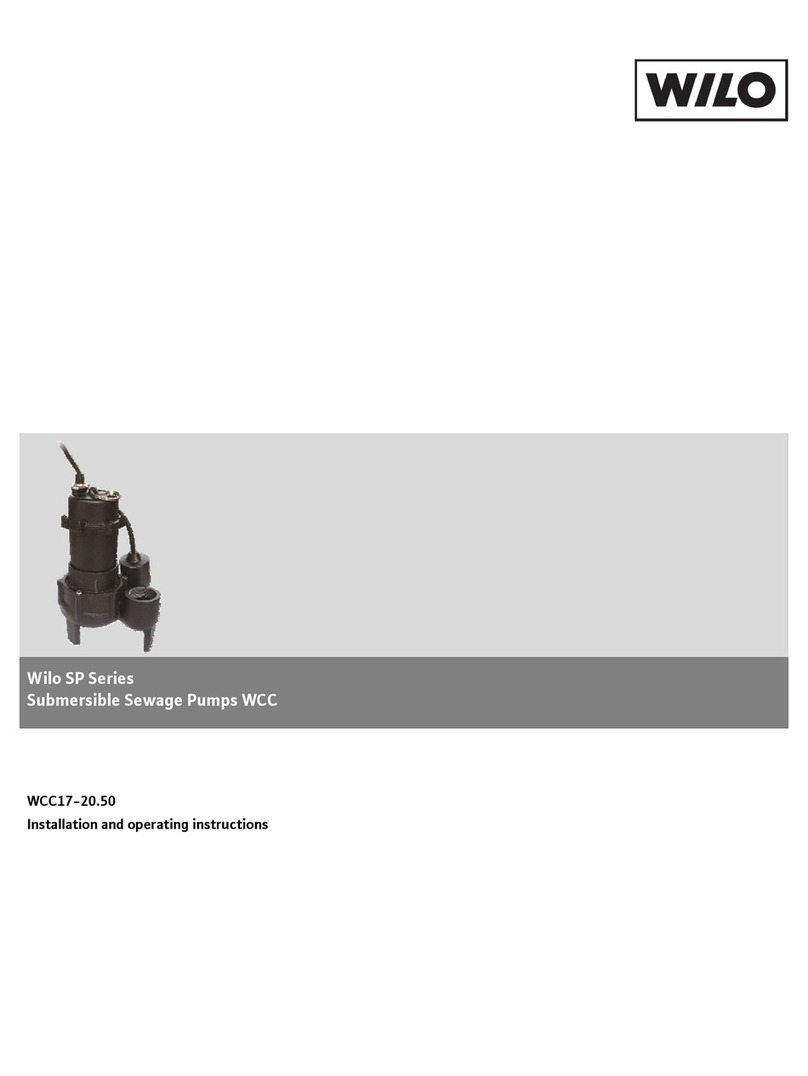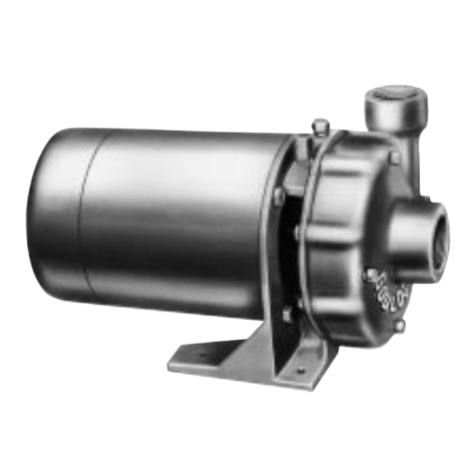
15
INHALTSVERZEICHNIS
Seite
1. Sicherheitshinweise 15
1.1 Kennzeichnung von Hinweisen 15
1.2 Personalqualifikation und -schulung 15
1.3 Gefahren bei Nichtbeachtung der Sicherheitshinweise 15
1.4 Sicherheitsbewusstes Arbeiten 15
1.5 Sicherheitshinweise für den Betreiber/Bediener 15
1.6 Sicherheitshinweise für Wartungs-, Inspektions- und
Montagearbeiten 15
1.7 Eigenmächtiger Umbau und Ersatzteilherstellung 16
1.8 Unzulässige Betriebsweisen 16
2. Allgemeines 16
2.1 Verwendungszweck 16
2.2 Technische Daten 16
3. Sicherheit 17
3.1 Sicherheitshinweise 17
4. Transport und Lagerung 17
4.1 Lieferung 17
4.2 Lagerung 17
5. Installation 17
5.1 Montage 17
5.2 Brunnendurchmesser 18
5.3 Wasserspiegel 18
5.4 Kontrolle der Motorflüssigkeit 18
5.5 Rohrleitungsanschluss 18
5.6 Absenkung der Pumpe 19
5.7 Eintauchtiefe 19
6. Frequenzumrichter 19
6.1 Aufstellen des Frequenzumrichters 19
6.2 Tasten am Frequenzumrichter 20
7. Elektrischer Anschluss 21
7.1 Anschluss des Frequenzumrichters 21
7.2 Generatorbetrieb 21
7.3 Vorgehensweise zum Starten des Generatorbetriebs 21
7.4 Vorgehensweise zum Beenden des Generatorbetriebs 21
7.5 Anschluss der Pumpe 22
8. Inbetriebnahme und Betrieb 22
8.1 Inbetriebnahme 22
8.2 Betrieb 22
9. Wartung und Service 22
9.1 Wartung 22
9.2 Service 23
10. Demontage und Montage 23
10.1 Beschreibung und Übersicht des MP 1 Probenahme-
Pumpensystems 23
10.2 Demontage der Pumpe 24
10.3 Kontrolle der Komponenten 24
10.4 Montage der Pumpe 25
11. Störungen, Ursachen und Abhilfe 26
11.1 Wiederinbetriebnahme nach Störungen 26
11.2 Störmeldungen am Frequenzumrichter 26
12. Entsorgung 26
1. Sicherheitshinweise
Diese Montage- und Betriebsanleitung enthält grundlegende Hin-
weise, die bei Aufstellung, Betrieb und Wartung zu beachten
sind. Sie ist daher unbedingt vor Montage und Inbetriebnahme
vom Monteur sowie dem zuständigen Fachpersonal/Betreiber zu
lesen. Sie muss ständig am Einsatzort der Anlage verfügbar sein.
Es sind nicht nur die unter diesem Abschnitt "Sicherheitshin-
weise" aufgeführten, allgemeinen Sicherheitshinweise zu beach-
ten, sondern auch die unter den anderen Abschnitten eingefüg-
ten, speziellen Sicherheitshinweise.
1.1 Kennzeichnung von Hinweisen
Direkt an der Anlage angebrachte Hinweise wie z.B.
• Drehrichtungspfeil
• Kennzeichnung für Fluidanschlüsse
müssen unbedingt beachtet und in vollständig lesbarem Zustand
gehalten werden.
1.2 Personalqualifikation und -schulung
Das Personal für Bedienung, Wartung, Inspektion und Montage
muss die entsprechende Qualifikation für diese Arbeiten aufwei-
sen. Verantwortungsbereich, Zuständigkeit und die Überwachung
des Personals müssen durch den Betreiber genau geregelt sein.
1.3 Gefahren bei Nichtbeachtung der Sicherheits-
hinweise
Die Nichtbeachtung der Sicherheitshinweise kann sowohl eine
Gefährdung für Personen als auch für die Umwelt und Anlage zur
Folge haben. Die Nichtbeachtung der Sicherheitshinweise kann
zum Verlust jeglicher Schadenersatzansprüche führen.
Im einzelnen kann Nichtbeachtung beispielsweise folgende
Gefährdungen nach sich ziehen:
• Versagen wichtiger Funktionen der Anlage
• Versagen vorgeschriebener Methoden zur Wartung und
Instandhaltung
• Gefährdung von Personen durch elektrische und mechani-
sche Einwirkungen.
1.4 Sicherheitsbewusstes Arbeiten
Die in dieser Montage- und Betriebsanleitung aufgeführten
Sicherheitshinweise, die bestehenden nationalen Vorschriften zur
Unfallverhütung sowie eventuelle interne Arbeits-, Betriebs- und
Sicherheitsvorschriften des Betreibers, sind zu beachten.
1.5 Sicherheitshinweise für den Betreiber/Bediener
• Ein vorhandener Berührungsschutz für sich bewegende Teile
darf bei einer sich in Betrieb befindlichen Anlage nicht ent-
fernt werden.
• Gefährdungen durch elektrische Energie sind auszuschließen
(Einzelheiten hierzu siehe z.B. in den Vorschriften des VDE
und der örtlichen Energieversorgungsunternehmen).
1.6 Sicherheitshinweise für Wartungs-, Inspektions-
und Montagearbeiten
Der Betreiber hat dafür zu sorgen, dass alle Wartungs-, Inspek-
tions- und Montagearbeiten von autorisiertem und qualifiziertem
Fachpersonal ausgeführt werden, das sich durch eingehendes
Studium der Montage- und Betriebsanleitung ausreichend infor-
miert hat.
Grundsätzlich sind Arbeiten an der Pumpe nur im Stillstand
durchzuführen. Die in der Montage- und Betriebsanleitung
beschriebene Vorgehensweise zum Stillsetzen der Anlage muss
unbedingt eingehalten werden.
Unmittelbar nach Abschluss der Arbeiten müssen alle Sicher-
heits- und Schutzeinrichtungen wieder angebracht bzw. in Funk-
tion gesetzt werden.
Achtung
Die in dieser Montage- und Betriebsanleitung
enthaltenen Sicherheitshinweise, die bei Nicht-
beachtung Gefährdungen für Personen hervor-
rufen können, sind mit dem allgemeinen
Gefahrensymbol "Sicherheitszeichen nach
DIN 4844-W00" besonders gekennzeichnet.
Achtung
Dieses Symbol finden Sie bei Sicherheitshinwei-
sen, deren Nichtbeachtung Gefahren für die
Maschine und deren Funktionen hervorrufen
kann.
Hinweis Hier stehen Ratschläge oder Hinweise, die das
Arbeiten erleichtern und für einen sicheren
Betrieb sorgen.






















